I started driving past the Century Plaza Hotel, along Century City's Avenue of the Stars, pretty regularly sometime in the year 2020, during the early months of the COVID-19 pandemic.

circa Dec. 2021
It was on my way home from the Santa Monica College swimming pool—but it wasn't the most convenient way home.
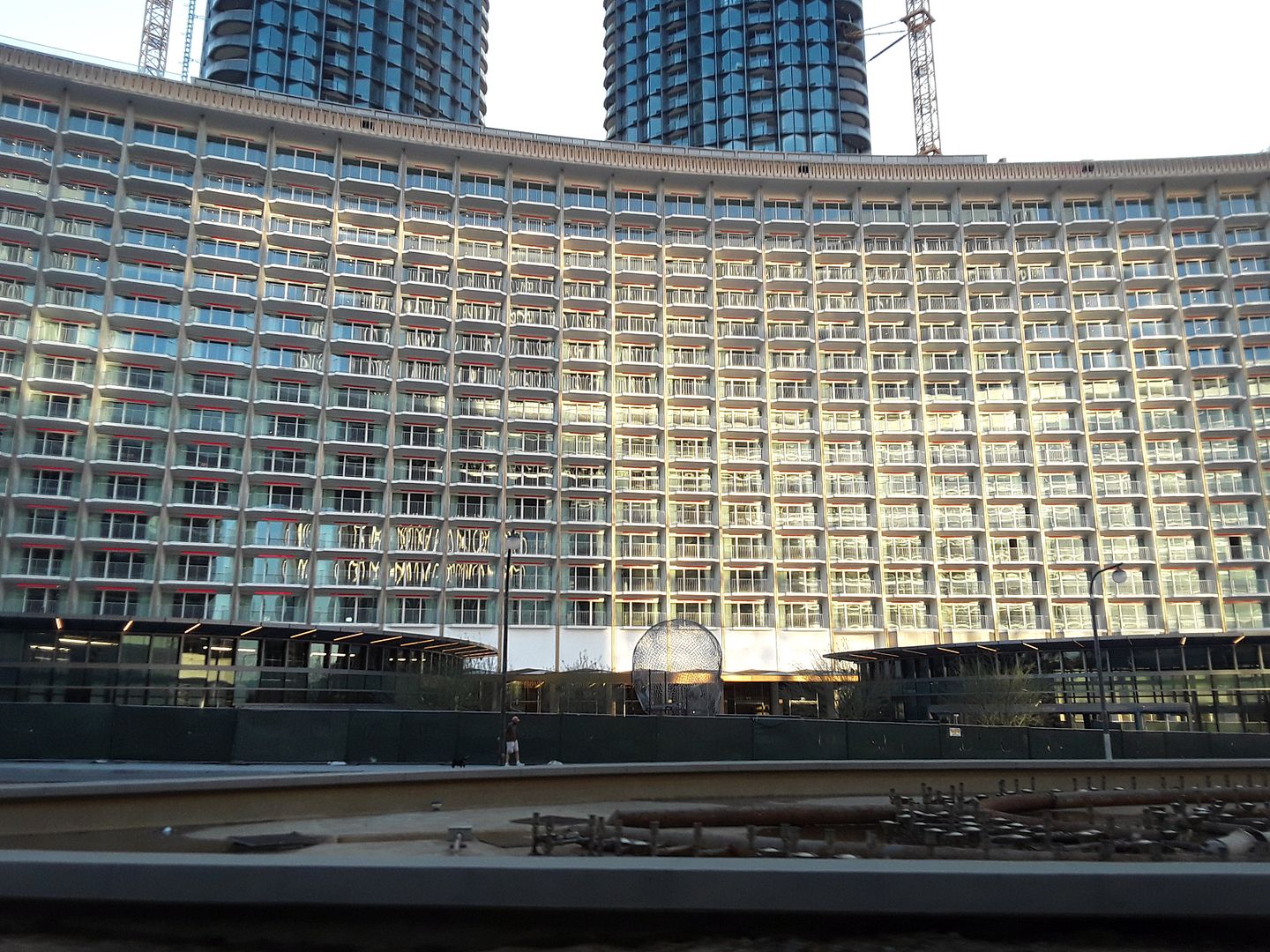
circa Oct. 2020
Although I'd been to an event once there in 2012, when it was the Hyatt Regency Century Plaza and its bar was XBar, I hadn't taken any photos and hadn't really admired its architecture.

circa Nov. 2020
That was also before I realized that the Century Plaza Hotel—and, pretty much all of that area of Century City, had been the 20th Century Fox studio backlot.
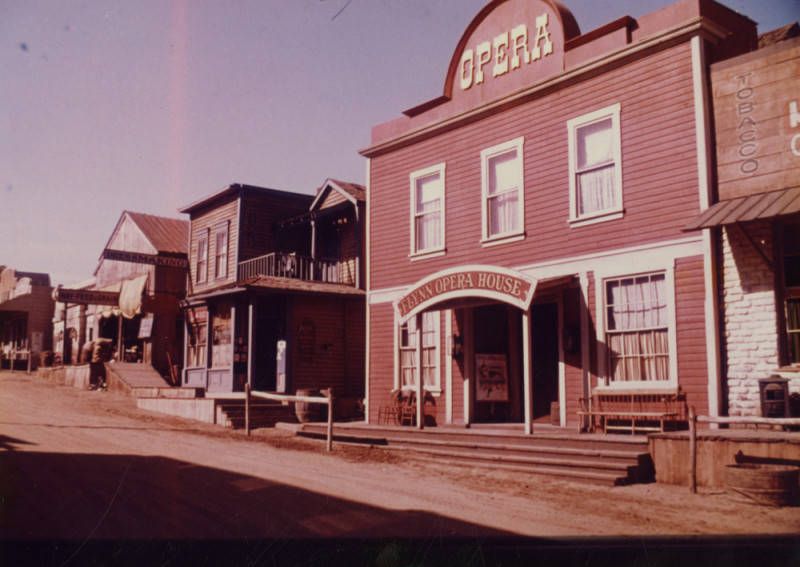
circa 1955 (Security Pacific National Bank Photo Collection/LAPL)
Now, Fox still has a studio with soundstages at Pico Boulevard and Avenue of the Stars—but its current facilities are just a fraction of the land that the backlot used to occupy, stretching all the way north to Santa Monica Boulevard. (The "Flynn Opera House," pictured above, was located approximately where the Century Plaza stands today.)
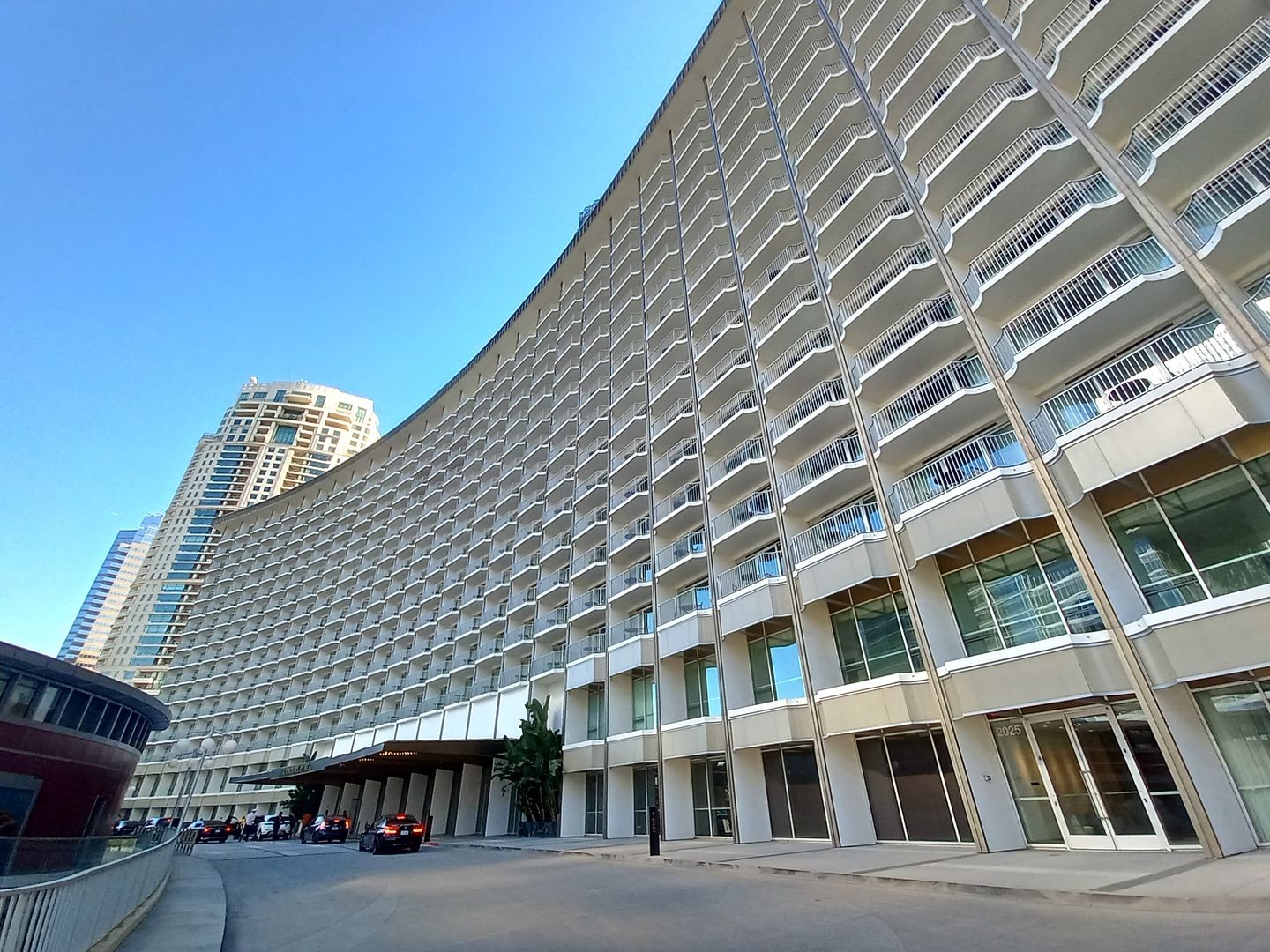
The movie studio had built its backlot on land it purchased from movie cowboy Tom Mix in 1926. In the early 1960s, financial troubles—in the wake of competition from TV, and after spending somewhere between $30 and 40 million on Cleopatra—prompted Fox to sell, according to Variety.

The "city" known as Century City (really just a neighborhood of the City of Los Angeles, though conceived as a "city within a city") was thus developed, with its first building (the Gateway West Building at Santa Monica Boulevard and Avenue of the Stars) completed in 1963 and the Century Plaza's groundbreaking following in January 1964.

circa 1969 (Security Pacific National Bank Photo Collection, LAPL)
In the early days, doormen dressed as Beefeaters (a.k.a. The Yeomen Warders of His Majesty's Royal Palace and Fortress the Tower of London, and Members of the Sovereign's Body Guard of the Yeoman Guard Extraordinary) used to greet guests at the front door.
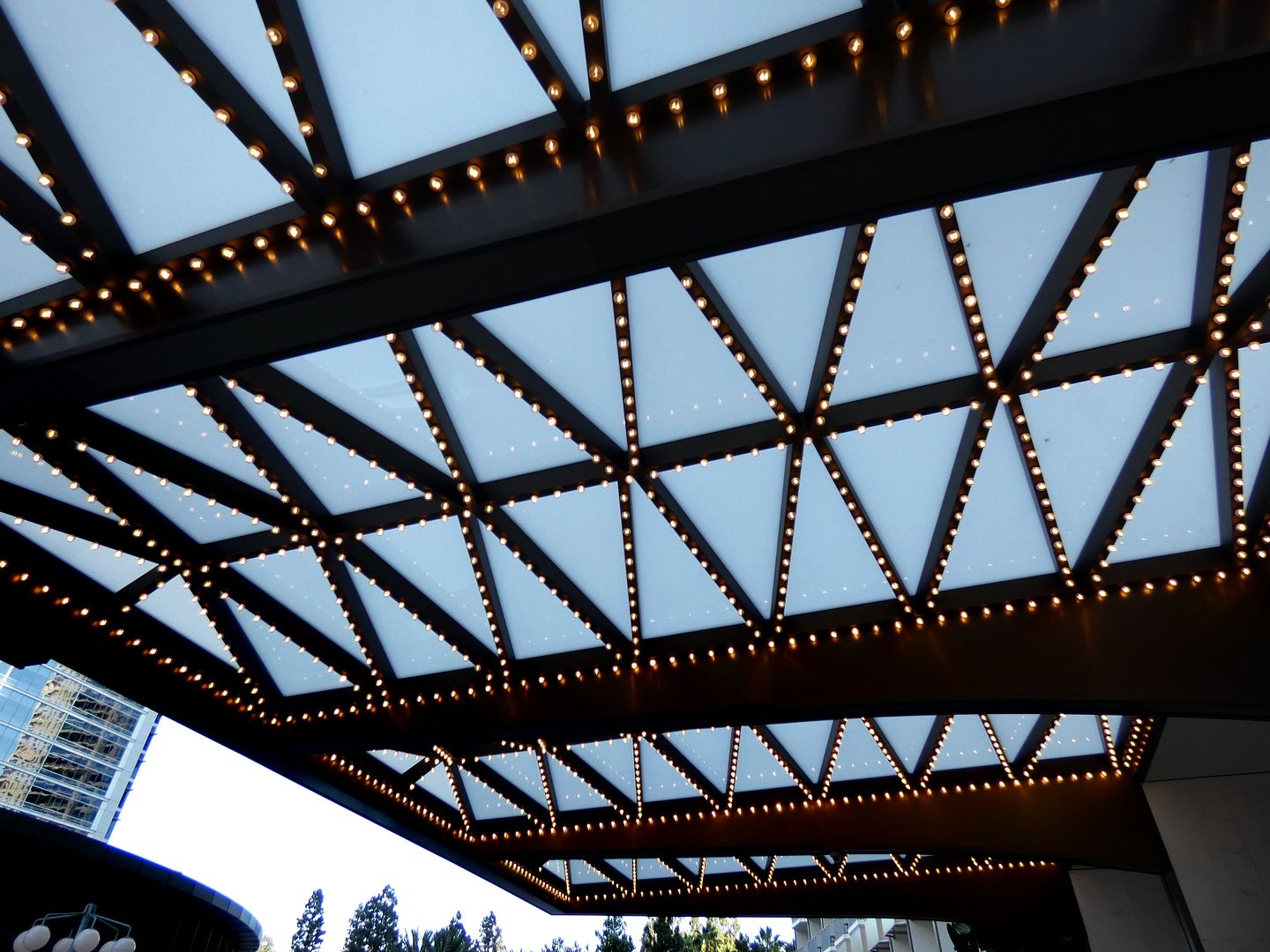
Not sure what that has to do with the "movie" theme of "Avenue of the Stars" or the "space age" theme of nearby Constellation Boulevard—but Welton Becket's master plan for Century City did call for "international" influences.
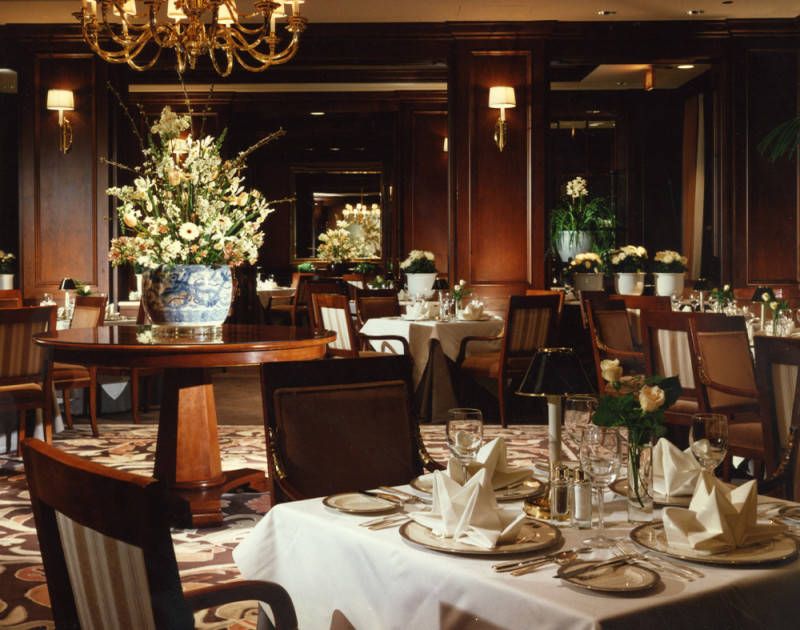
Photo: Security Pacific National Bank Photo Collection, LAPL
In 1985 (above), there was a French restaurant onsite called La Chaumiere—which was scrapped in 1991.
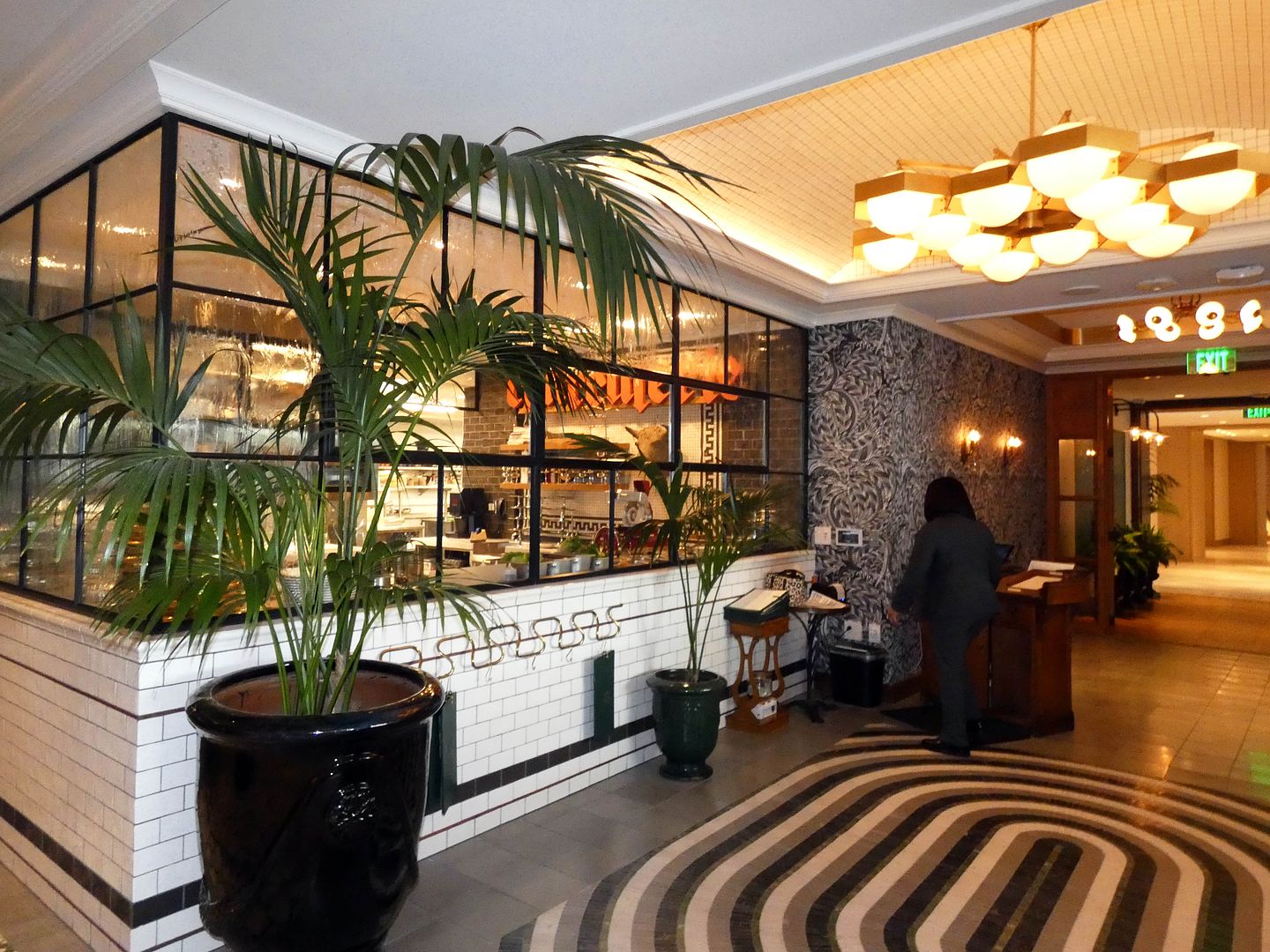
After a multiple-year closure for a renovation that started in 2016 (click here for what it looked like then), including a seismic retrofit, there's now a French bistro off the lobby called Lumière.
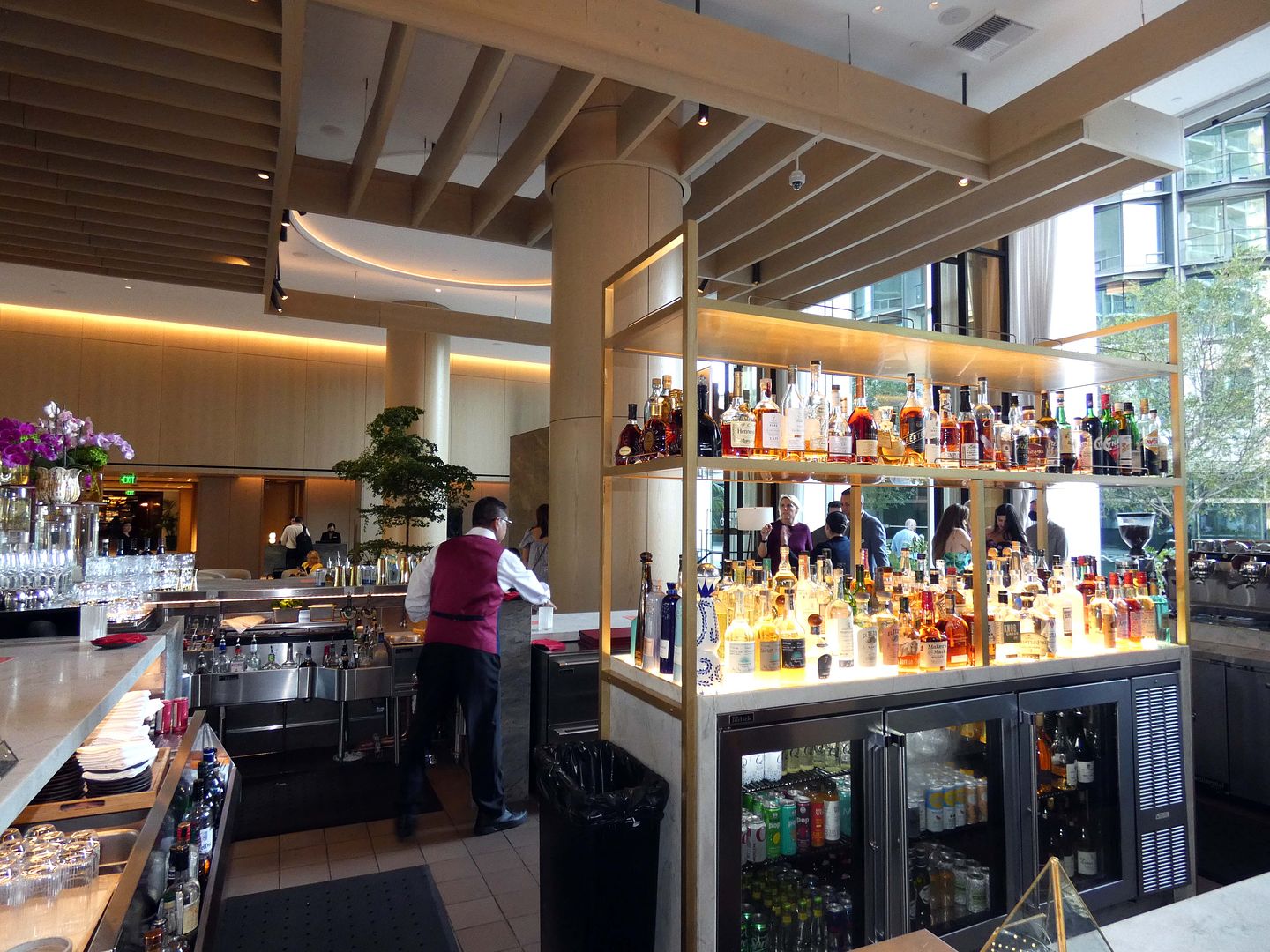
In August 2022, nearly a year after the hotel had reopened, it welcomed guests to a "Havana Night" at the lobby bar...
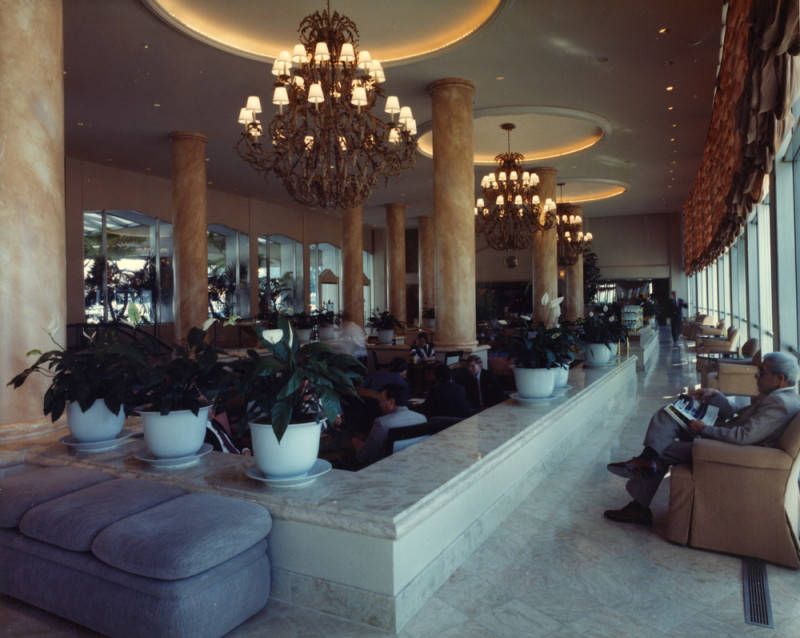
Photo: Security Pacific National Bank Photo Collection, LAPL
...which looks more modern than the chandeliered and pillared lobby experience of days gone by, although the recessed circles in the ceiling still remain.

I wondered what sorts of themed nights might've occurred at the Century Plaza during its heyday, when it was visited by presidential types (like Ronald Reagan, whose preference for the hotel earned it the nickname the "Western White House") and red-carpet celebrities (like Elizabeth Taylor) alike.
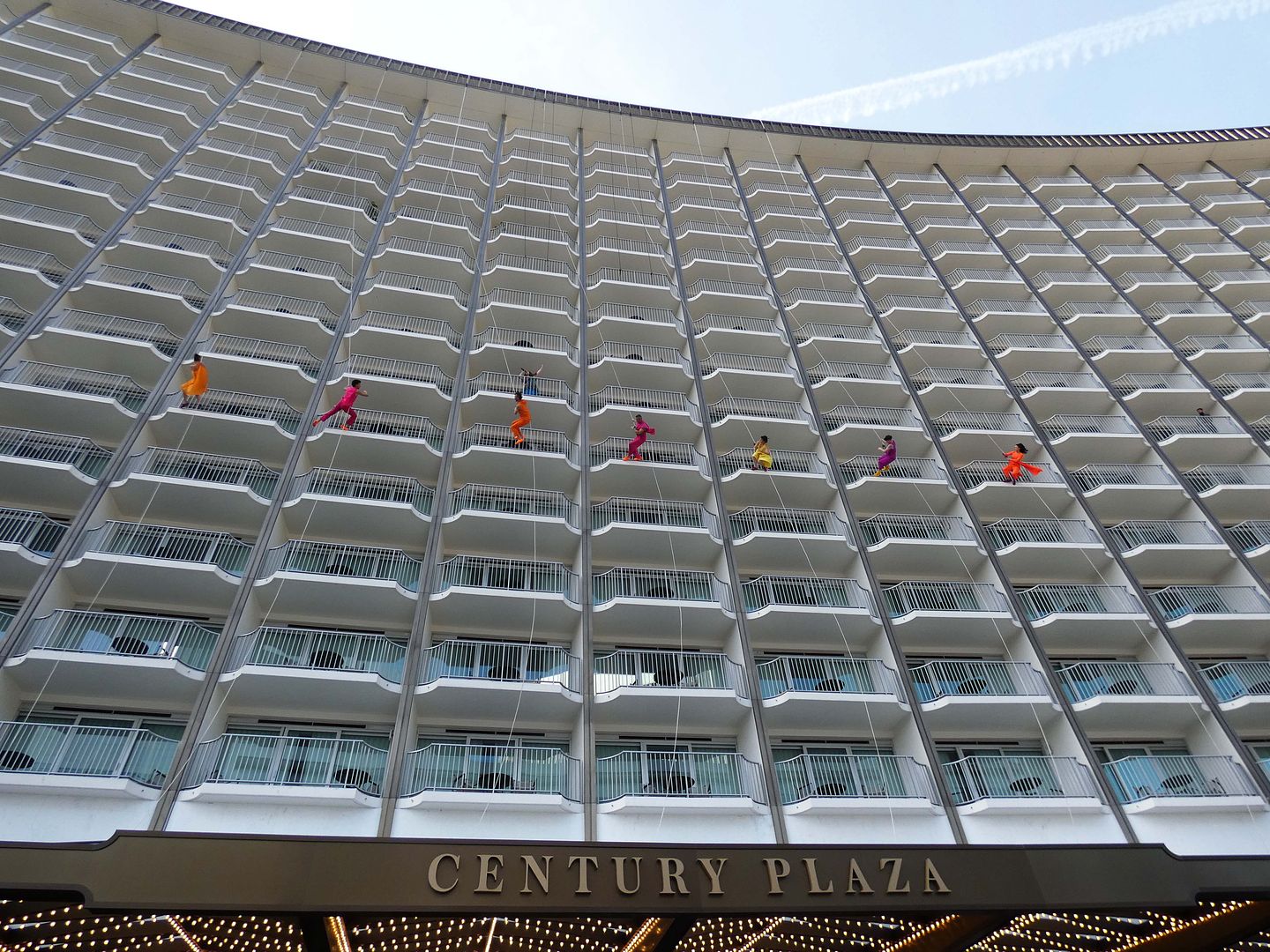
And then I was invited to a press preview of something that made me see the hotel in an entirely different light: aerial dance troupe BANDALOOP and their site-specific performance of "The Vertical Stage."

Tethered dancers hopped, flipped, and ran across the hotel's façade—really highlighting the monumentalism of architect Minoru Yamasaki's design for the hotel, which opened with 800 rooms on 19 floors in 1966. Then operated by Western International Hotels (which later became Westin), it was LA's third-largest, and the first hotel to have color TVs in every room.

Yamasaki's New Formalism style of architecture was tapped by then-owner/developer Aluminum Company of America (Alcoa) to create "the most beautiful hotel in the world," according to the March 13, 1963 issue of the Los Angeles Times—in fact, the "keystone of the entire Century City project."
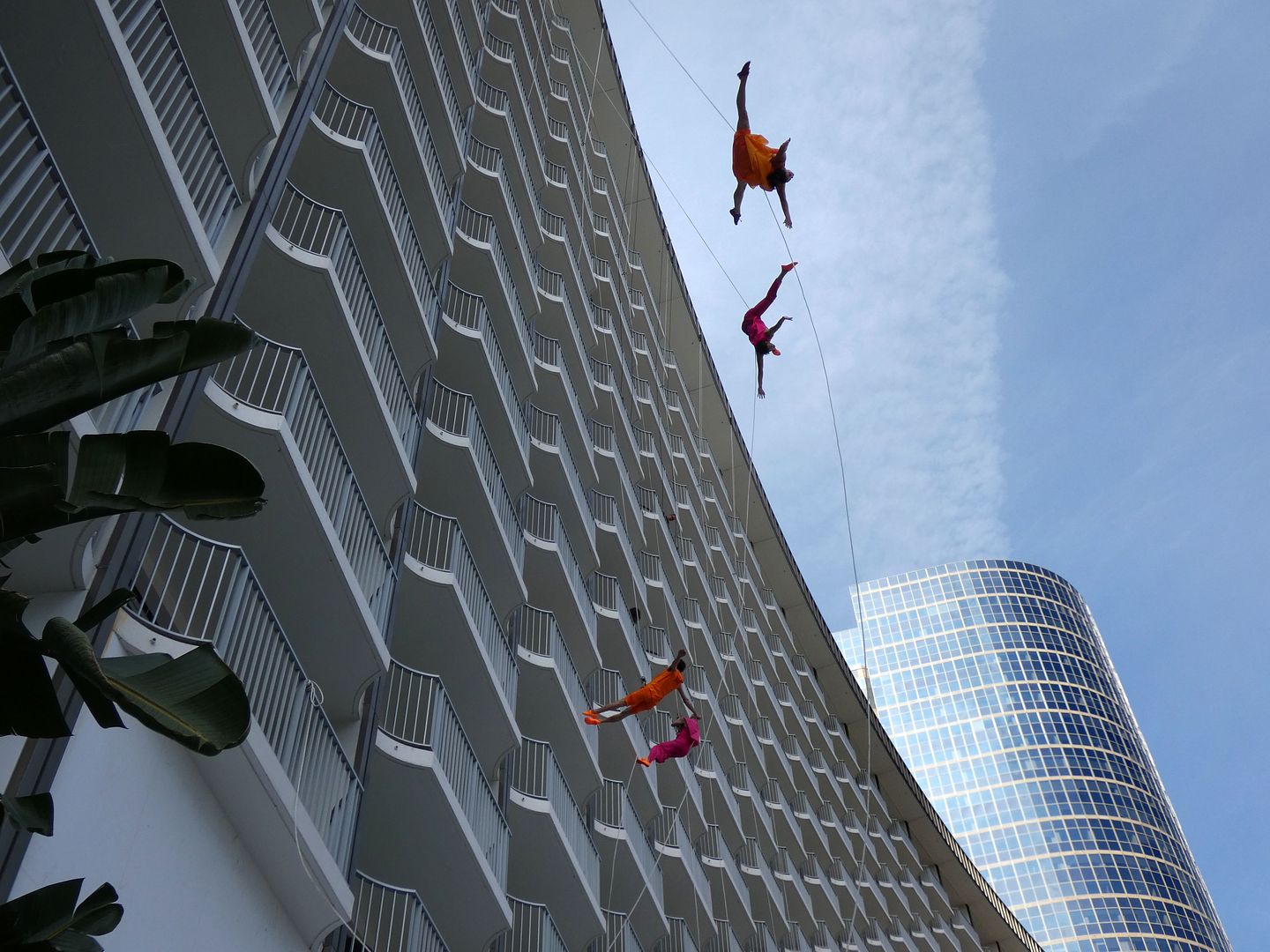
Yet in 2008, a developer (Woodbridge Capital Partners) planned to demolish it—landing it on the National Trust for Historic Preservation's "America's 11 Most Endangered Historic Places" list the following year.

Fortunately, the hotel was saved and some of its distinctive features—its balconied rooms, its aluminum sliding doors and column covers—have come to be appreciated.
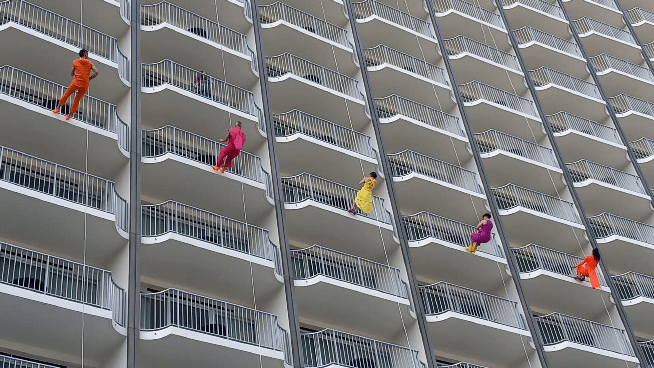

The rooms have since been reconfigured, creating some penthouses and residential condos that have reduced the room count—but adjacent towers have been added to make up for those reductions, and then some.
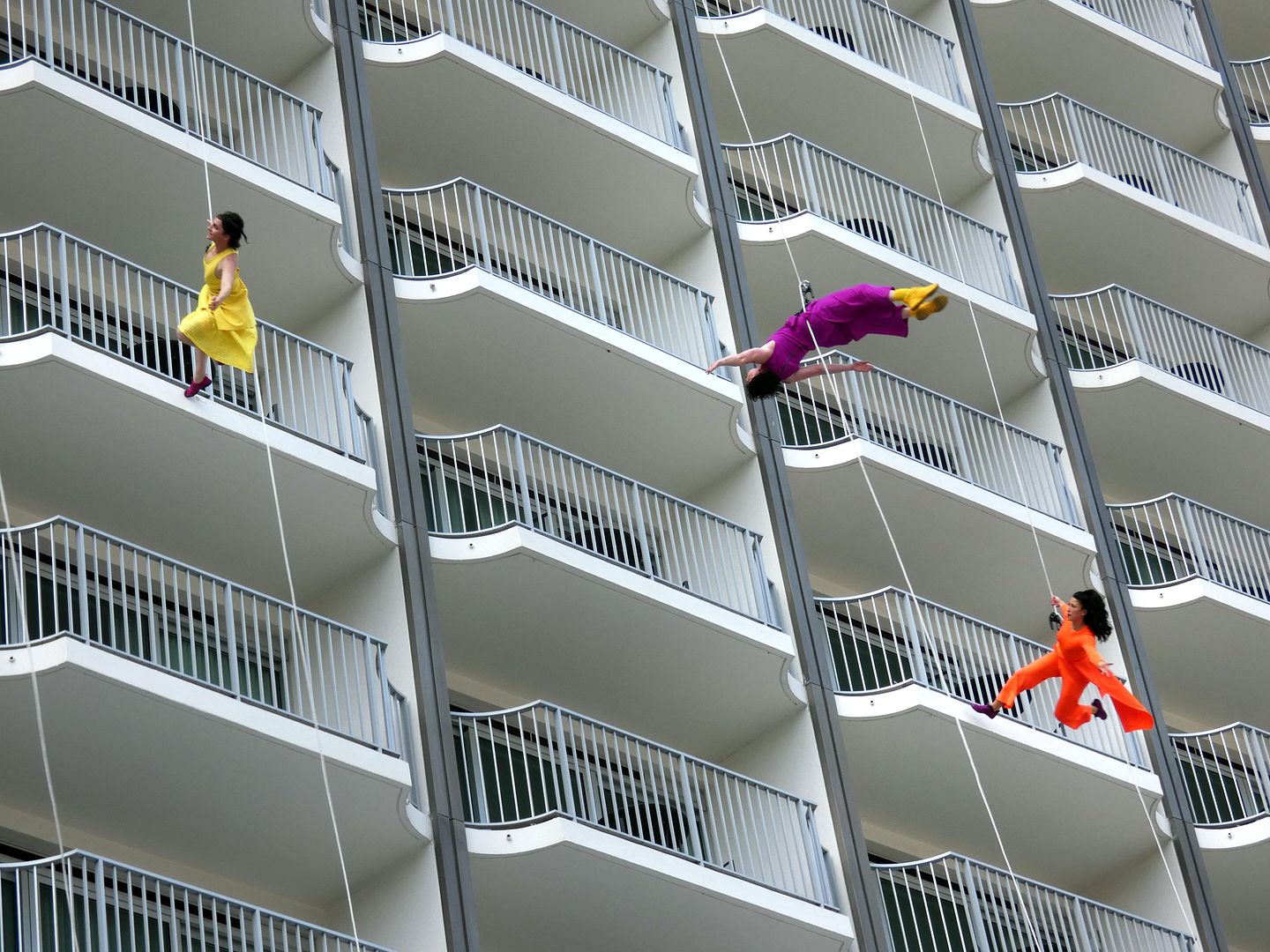
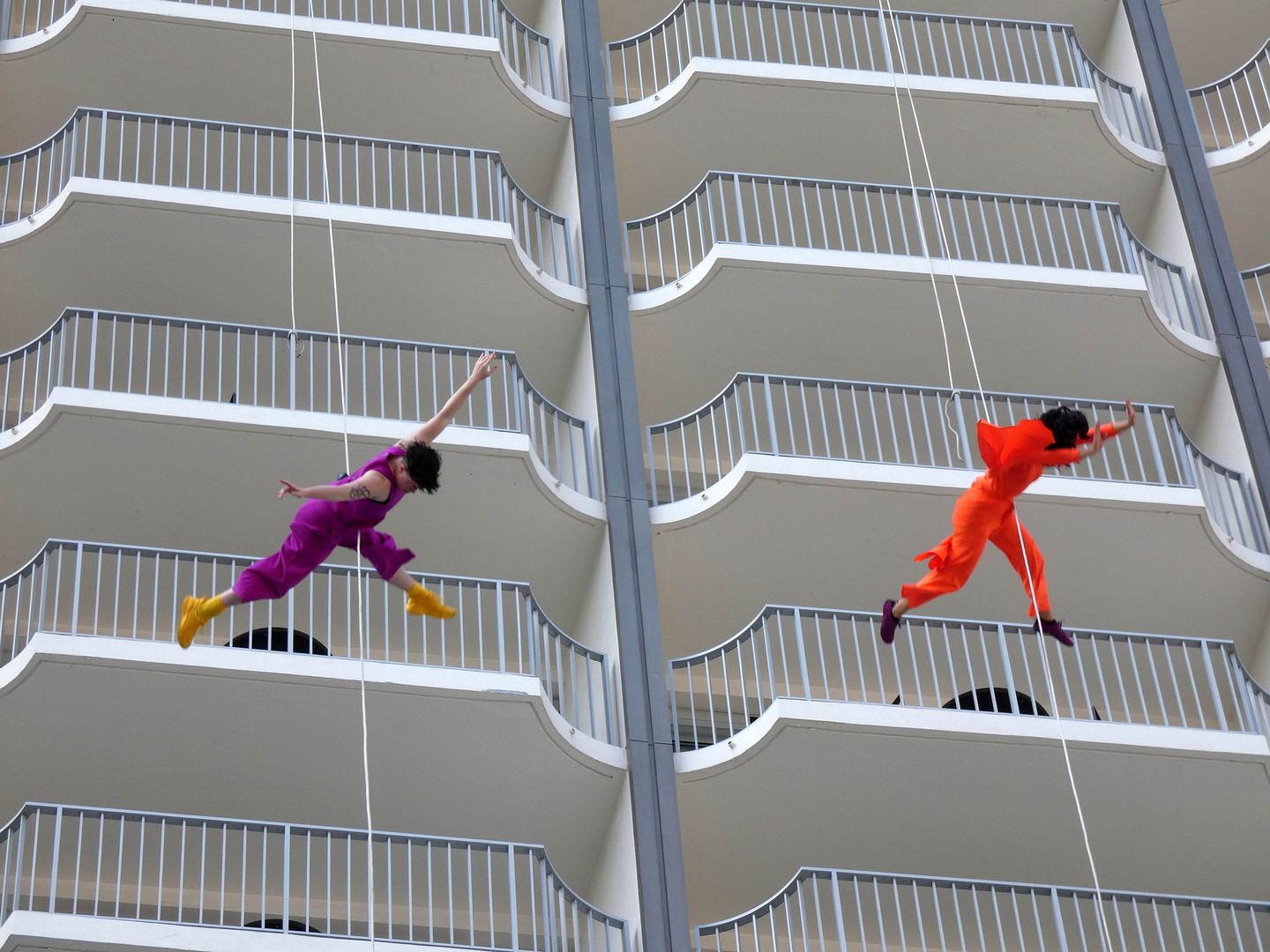
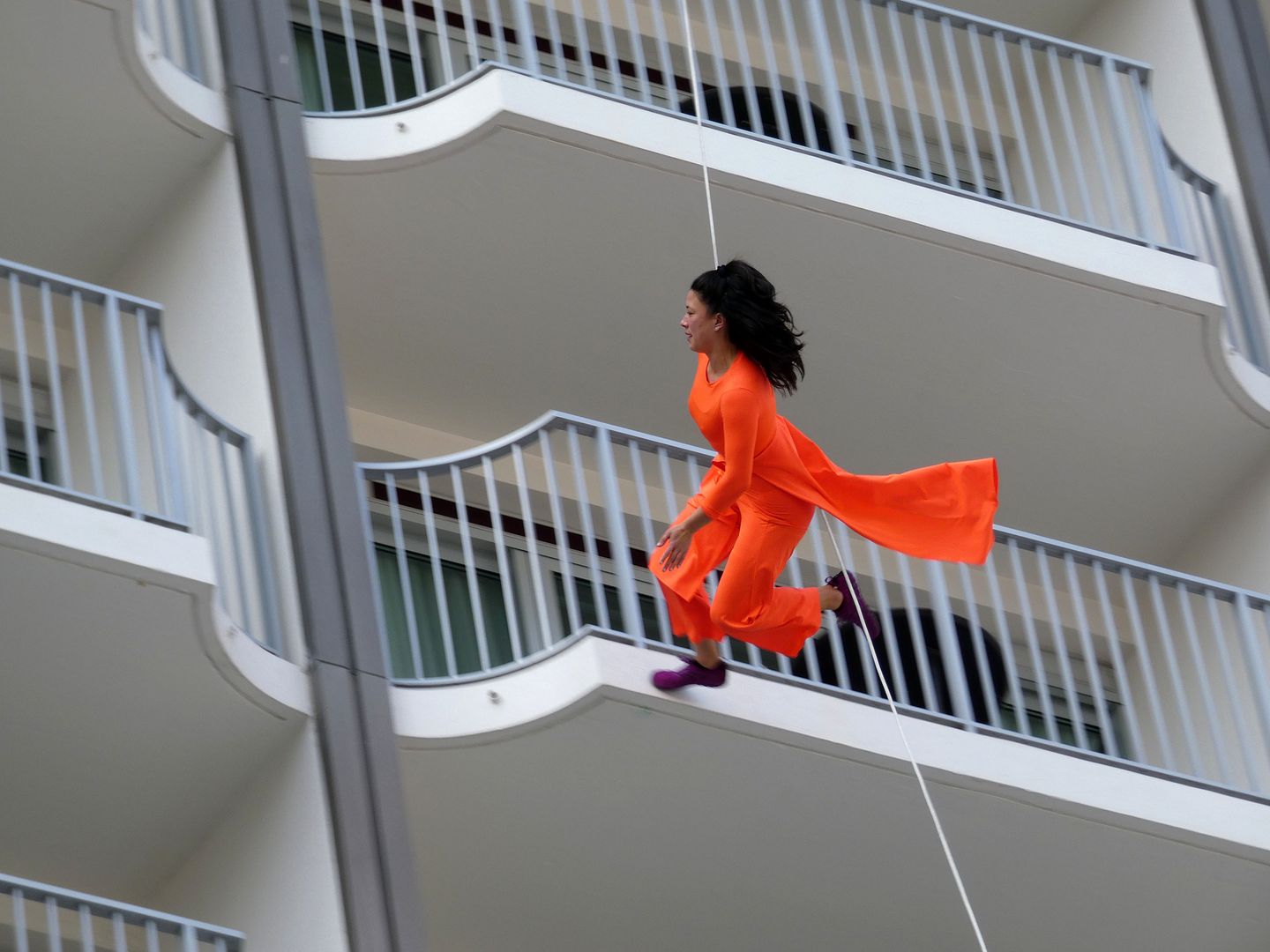
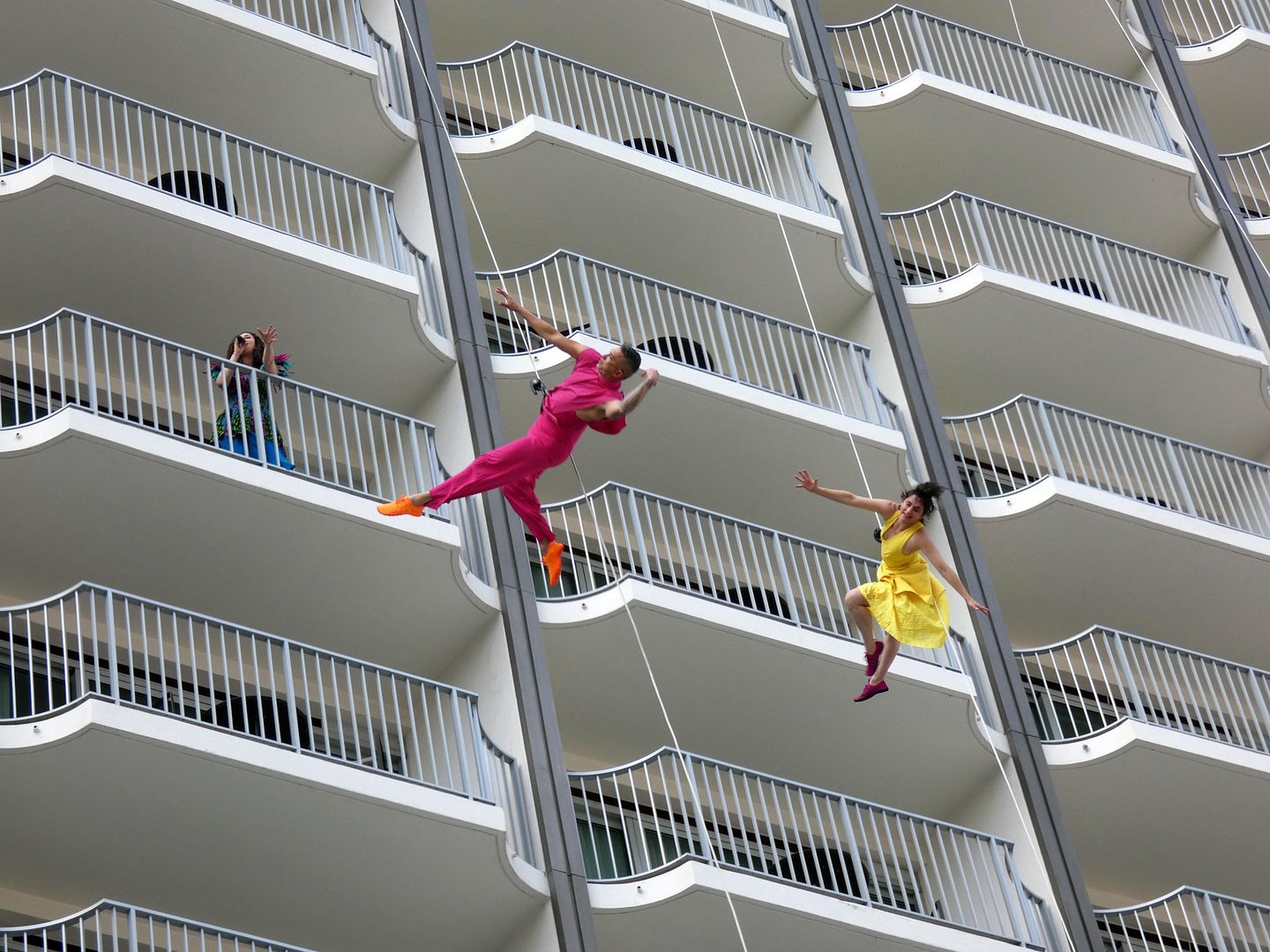
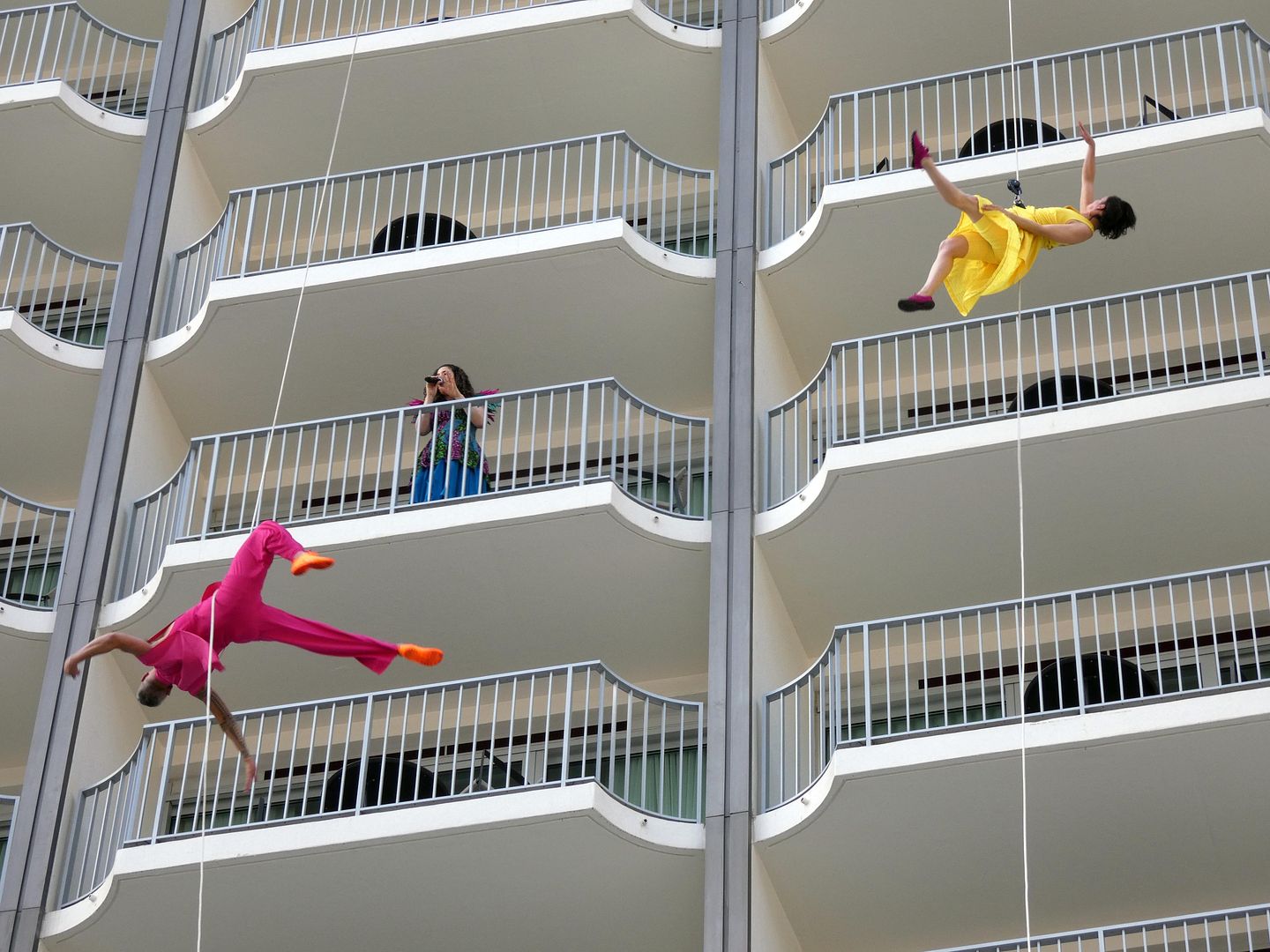


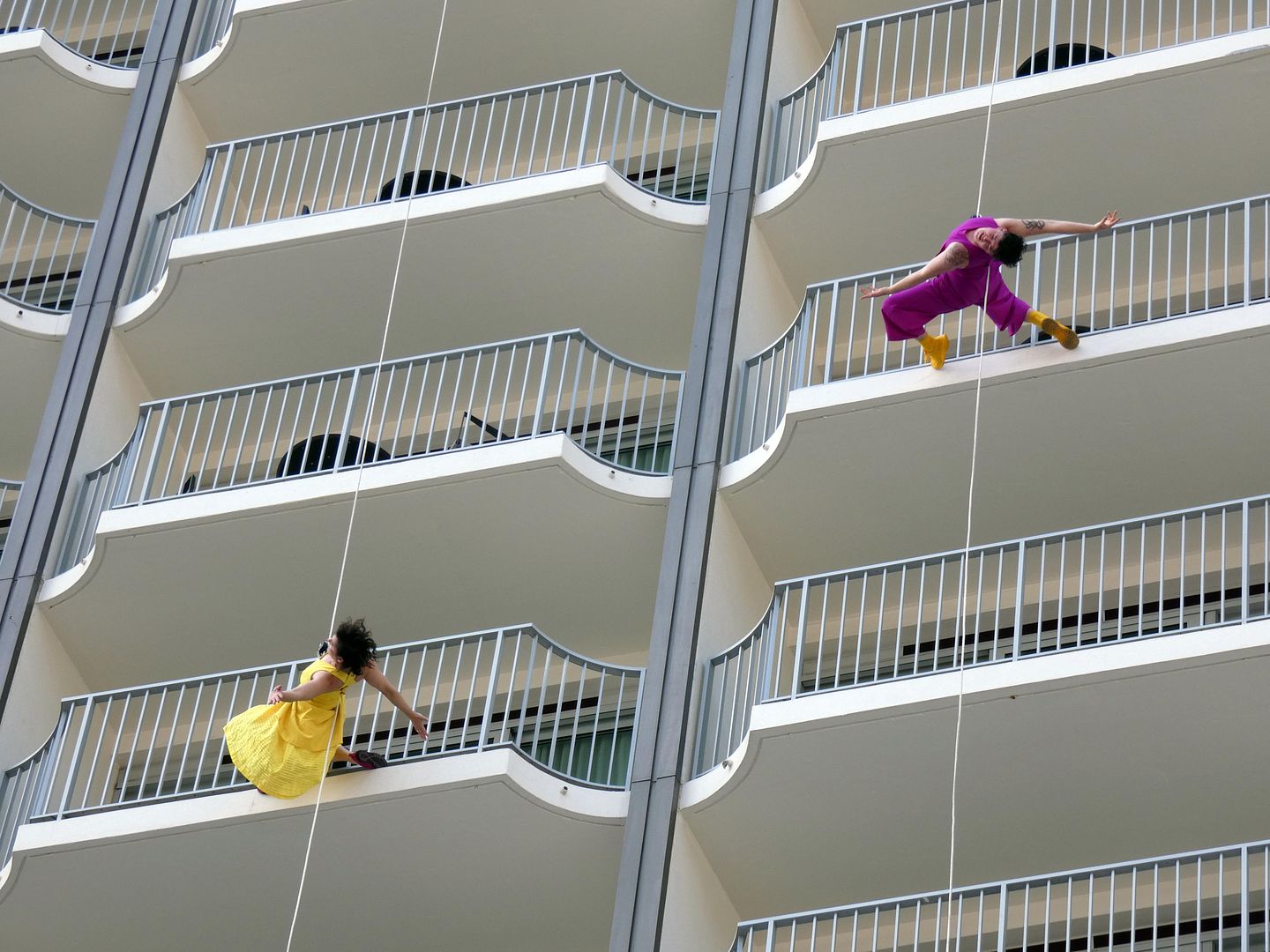

It may not longer be considered "the Hotel of the Future," but the aerial dance performance it recently hosted on the concave side of its crescent shape was pretty non-traditional and eye-grabbing.

It's one thing to just look at a building, or to go inside of it. But it's entirely another thing to interact with it.

And the BANDALOOP dancers brought new life to those concrete, beveled balconies, which stand 14 high and 26 across. (Those are called "chamfered corners," by the way.)

Just as the dancers were constantly in motion, the Century Plaza—and Century City itself—seems to be ever-evolving.

It appears that some mixed-use elements are still to be added to the Century Plaza's front entryway/pedestrian plaza...

...and the construction of new buildings in the surrounding area seems to be never-ending.

The Century City mall just north of the Century Plaza Hotel was half-demolished and rebuilt from 2015-7—a project that included the razing of the Gateway West building.

And just as the BANDALOOP dancers ascended to neck-craning heights (at least from the audience perspective), developers will surely continue to try to pierce the sky with taller and taller projects, further obstructing the view from the Century Plaza—which was once clear all the way out to the Pacific Ocean.
Related Posts:

No comments:
Post a Comment